Discrete Ambiance: “Swarm Study/II” at UMMA
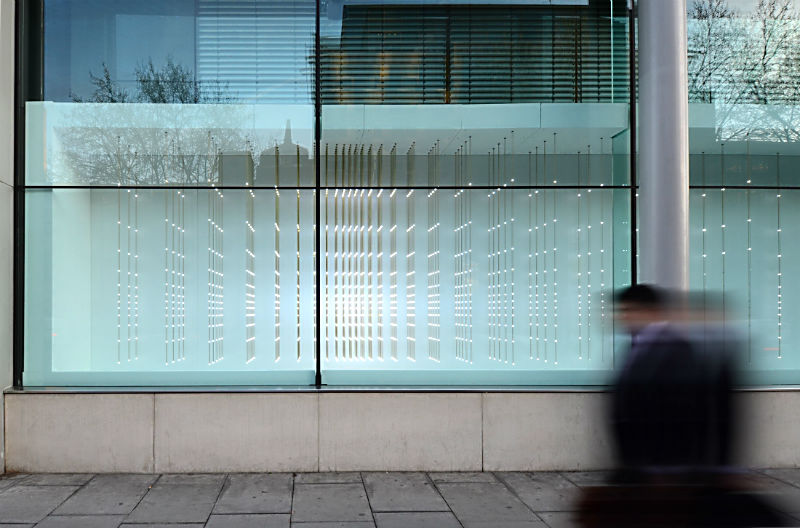
It’s not unfair to say Swarm Study/II is a visual art experience that will long stay with you. But such an accolade is also far too passive. If given the chance, Swarm Study/II will not only stay with you -- it will literally follow you.
This 2011 site-specific installation on display in the University of Michigan Museum of Art’s Irving Stenn Jr. Family Project Gallery, mounted through the courtesy of the Maxine and Stewart Frankel Foundation for Art, is held in conjunction with the museum’s Victors for Art: Michigan’s Alumni Collectors -- Part II: Abstraction exhibition.
U-M SMTD's tidy exhibition of Beatles material celebrates the 50th anniversary of "Sgt. Pepper's"
The University of Michigan School of Music, Theater, and Dance's “Summit of Creativity: A Celebration of the 50th Anniversary of The Beatles’ of 'Sgt. Pepper’s Lonely Hearts Club Band'" drew experts from across the country in June to examine and analyze this timeless music with an academic panache typically reserved for the likes of Shakespeare, Gilgamesh, and radioisotopes.
By contrast, U-M musicologist Walter Everett’s 46-item exhibit 50th Anniversary of the Release of 'Sgt. Pepper’s Lonely Hearts Club Band' is tidy in comparison to the sprawling analysis bestowed on The Beatles and this record in particular. Both the band and Sgt. Pepper's are now part of the firmament in our shared cultural and intellectual history, and they are now well worthy of deep study and scrutiny. But The Beatles certainly didn’t conceive the album with all that in mind.
O say did you see the Ford Library's “Banner Moments: The National Anthem in American Life”?
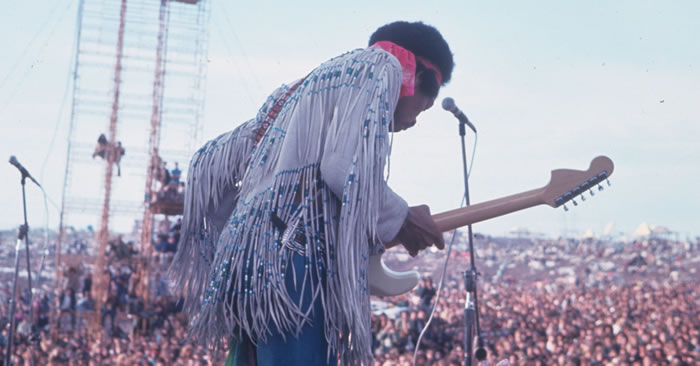
“O say can you see” takes on a whole new meaning at the Gerald R. Ford Library’s Banner Moments: The National Anthem in American Life.
Part of the presidential libraries system of the National Archives and Records Administration, the Ford Library collects, preserves, and makes accessible a rich body of archival materials focusing on the Ford presidential administration. The Library also hosts a series of temporary exhibits that focus on American history.
This exhibit -- curated and organized by University of Michigan musicologist Mark Clague and Bettina Cousineau, exhibit specialist at the Ford Library and Ford Museum -- traces the 200-year history of America’s national anthem through 10 interpretive panels and four display cases filled with historical documents.
And what a busy 200 years it has been.
In a recent interview, music professor Clague dispelled a number of common myths about the anthem as well as a clarification of the anthem’s place in American history.
Soul Nourishers: Kathleen Alfonso's "Quiet Spaces" at Kerrytown Concert House

Kathleen Alfonso’s Quiet Spaces paintings are biomorphic abstractions. Her art hums with a quiet spiritual conviction and it has turned Kerrytown Concert House into a meditative setting for leisurely contemplation.
As Alfonso tells us in her gallery statement: “Let us join together in celebration of the beautiful natural world we have around us; the ever-changing landscape that delights and nourishes our soul.” She says her work is meant to “fulfill a need in our human nature to connect with the natural world," and to give word to Alfonso’s imaginative color-field configurations she uses the examples of “the intrinsic design of a plant leaf so full of variety and life; light shining and creating shadows into a space; or the current of water flowing and creating ripples and reflection."
Ultimately, she wisely concludes, art is “complex; but simply viewed, causing us to respond.”
Motion Lights: UMMA's "Moving Image: Performance"
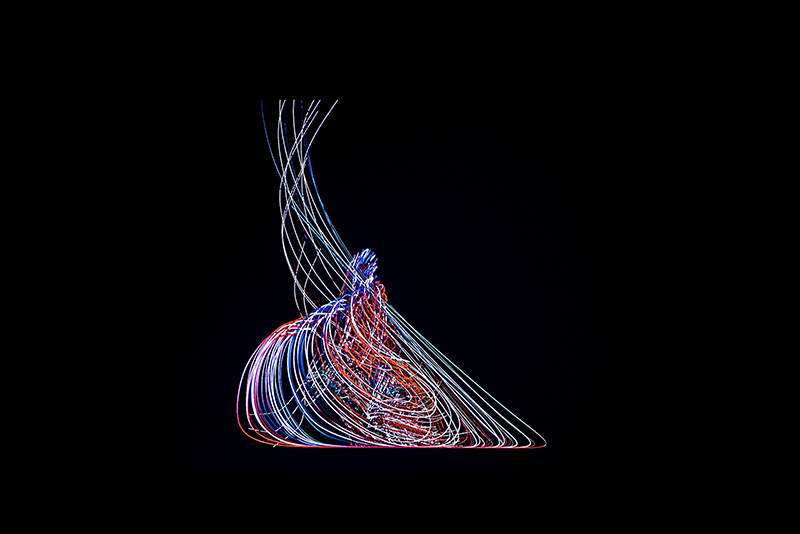
The art of motion is currently on display in the University of Michigan Museum of Art’s spirited Moving Images: Performance.
The second of UMMA's three presentations drawn from Istanbul, Turkey's Borusan Contemporary museum, Moving Images: Performance illustrates the subtle (and sometimes not-so-subtle) relationship of performance and moving-image media that’s been fostered by the advent of the portable video camera.
The exhibit complements the concurrent UMMA installation Rafael Lozano-Hemmer: Wavefunction, Subsculpture 9, which is a subject we’ll get to in a forthcoming review. But for the time being, the four short videos in this exhibit stand as prime examples of experimental filmmaking.
Revival: “Whipstitch: The State of Contemporary Textiles" at Ann Arbor Art Center

The Ann Arbor Art Center’s “Whipstitch: The State of Contemporary Textiles” does the rather nifty trick of reimagining yesterday’s art today through a conceptualization of what may be the art of tomorrow.
Granted, this notion may sound convoluted, but it’s really quite simple: Fiber, like architecture, can reasonably vie as the oldest of all arts. The reason for this is quite apparent with little consideration.
Yet the art of fiber (like another such ancient art, ceramics) has been essentially aesthetically dormant for millenniums -- and this is also for the same reason already considered. For as a practical artisan regard, fiber’s use has been largely defined rigidly as either being functional or fashionable with little thought outside of this.
Michelle Hegyi's superb sense of spatial balance on display at the WSG

Illustrating the principle that an artful passion can arise from the coolest of mediums, Michelle Hegyi’s “Wild Forest” manages to encapsulate both passion and discipline in a further consolidation of aesthetic strategy.
This is the fifth time I’ve caught Hegyi’s art in her WSG context. There was a streak of exhibits—June 2006’s “The shape of the Sky”; August 2008’s “Gardens of Love and Fire”; August 2010’s “Do You Remember the Shape of Trees…”; and November 2012’s “How the Day Changes with the Light”—where it was possible to chart Hegyi’s growth transitioning from old school printmaking to digital printmaking.
It’s been a privilege to see her work advancing technologically even as she consolidated her print expertise. It’s equally good to note that she’s still as restless in her study as she is in her craft.
In this instance—and working happily in the juncture between abstraction and representation—Hegyi continues to craft a hybrid computer-based painting where her abstraction is comingled with her inspiration.
Stimulation and Possibility: Dick Siegel's "Digital Manipulations" at Kerrytown Concert House
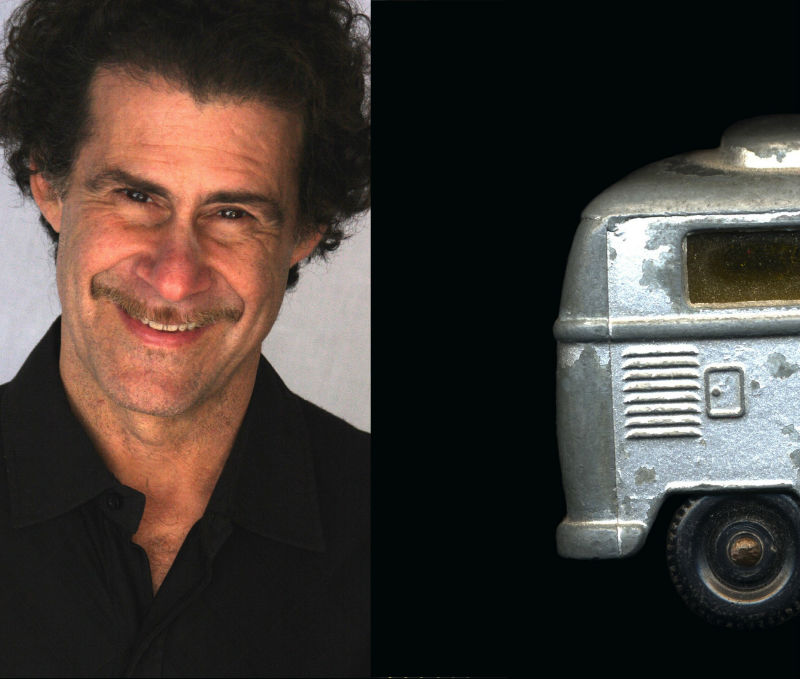
Local award-winning singer-songwriter Dick Siegel’s return to the visual arts has been a long time in coming. But having found his chosen medium, his return is both assured and insightful.
In a recent interview at the Kerrytown Concert House, Siegel said both the visual arts and music were passions that run through his family experience. But as his personal interest was in music -- and a reasonable one at that considering his award as Best New Folk Artist at the 1991 Kerrville Folk Festival and multiple Detroit Art Awards -- it was only until the turn of the millennium when working with a computer and scanner that his visual arts creativity began to take hold.
As Siegel says in his artist statement for this exhibit, “Through digital manipulation of color, shape, and image I enter a world of enormous visual stimulation and possibility. In this realm I discover things to construct that move me, amuse me, and amaze me. I then work to bring them into physical reality with their vividness and vitality intact."
“The Aesthetic Movement in America: Artists of the Photo-Secession” at UMMA
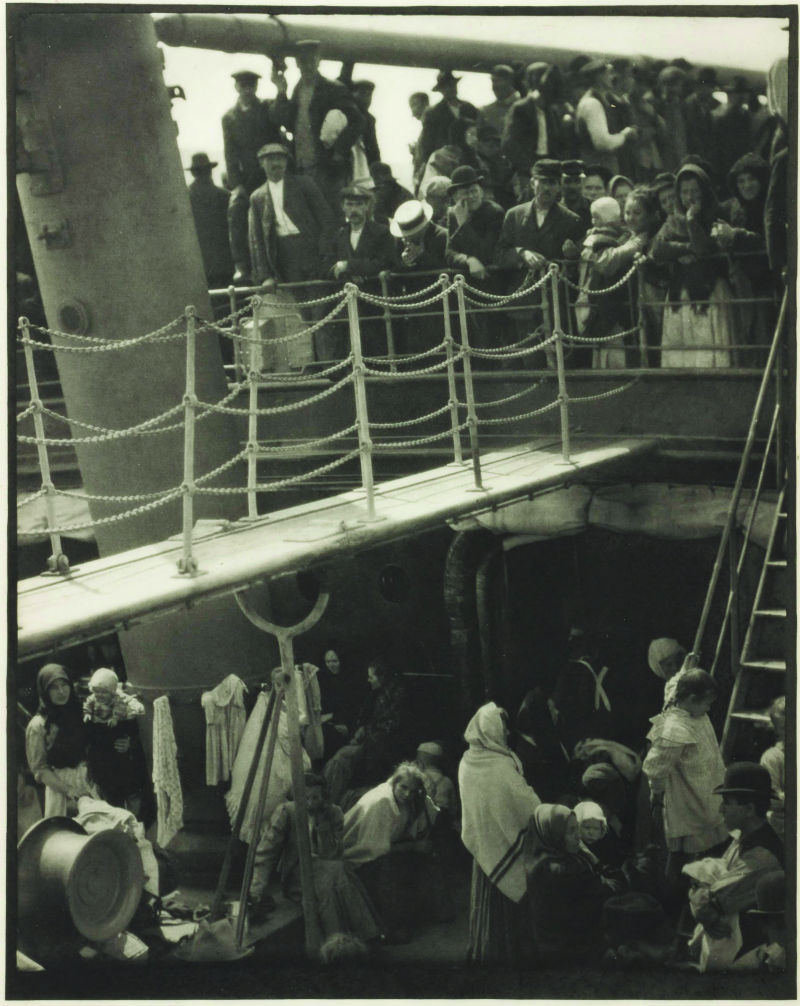
The Photo-Secession movement is one of those rare historic instances where radicalism won -- and still wins today.
As seen in “The Aesthetic Movement in America: Artists of the Photo-Secession” at the University of Michigan Museum of Art, this turn-of-the-20th-century American creation became “the first truly international photography movement,” as noted in the gallery statement by UMMA Curator Emerita Carole McNamara. She also wrote that the movement's practitioners -- among them ringleader Alfred Stieglitz as well as Alvin Langdon Coburn, Gertrude Käsebier, Edward Steichen, Paul Strand, and Clarence White -- “sought to position photography as a legitimate aesthetic artform.”
Subtle Switches: "Nancy Feldkamp, Watercolors” at Kerrytown Concert House
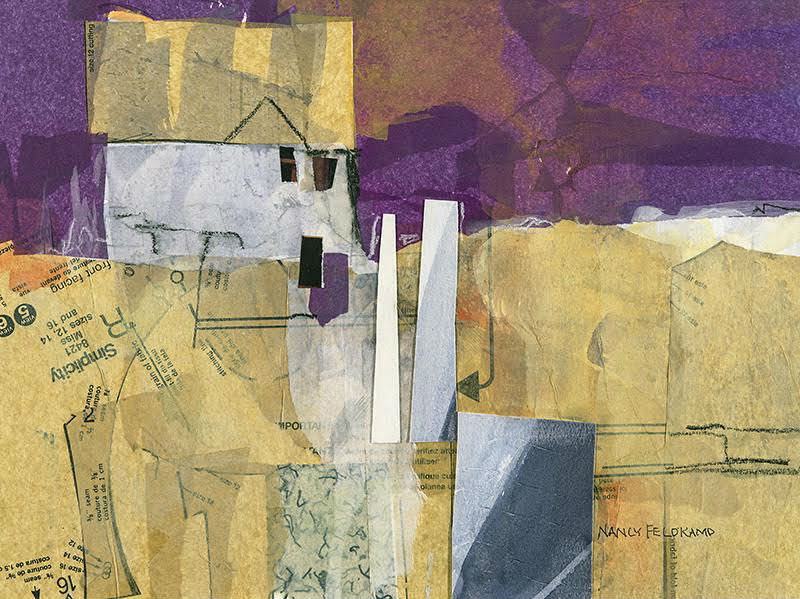
Sometimes what you see in an artist's work isn’t nearly as important as what you don’t see. Nancy Feldkamp’s Watercolors at the Kerrytown Concert House shows the Chelsea resident's transformation from a geometrically focused painter to one who uses subtle inferences to give shape to her renderings.
As ever, her pastoral themes remain, as Feldkamp modestly says in her KCH gallery statement: “My work honors the beauty of farm life and its interaction with nature in intuitive ways. The shapes and lines suggest distant farmsteads as they nestle together in their actual settings and this stirs my responses.”
Quite right, yet looking at Feldkamp’s work in this light only tells half the story in this show. While nature and rural settings still play a significant role in her paintings, how she depicts those scenes has changed considerably during the two decades I've observed her output. Back in the 1990s, Feldkamp’s art was rigorously geometrically driven. Her countryside settings were activated by a compositional style whose expression was subordinated to her rectilinear line.


































